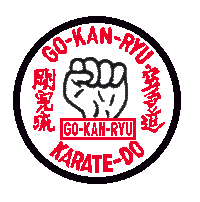


Blisters
Bruises
Martial Arts First Aid Kit
Hematomas
Strains & Sprains
 |
 |
||||||||||||||||||||||||||||||
| Common Martial Arts Injuries | |||||||||||||||||||||||||||||||
| What should i do with an injury ? | |||||||||||||||||||||||||||||||
| First you should report your injury to your Sensei | |||||||||||||||||||||||||||||||
 |
|||||||||||||||||||||||||||||||
| Please note serious injuries are rare in the Dojo. | |||||||||||||||||||||||||||||||
| Common Martial Arts Injuries | |||||||||||||||||||||||||||||||
| Abrasions Blisters Bruises Martial Arts First Aid Kit Hematomas Strains & Sprains |
|||||||||||||||||||||||||||||||
| Abrasions | |||||||||||||||||||||||||||||||
| The second most common martial arts injury (first being blisters) is the abrasion or floor burn. This is a superficial wound of the outer skin layer that has a raw, scraped look. The wound may be bleed slightly or not at all. Usually the wound contains no debris since it occurs on a floor, however occasionally the injury may have dirt or grass embedded in the skin. The major concern of an abrasion is to prevent infection. Basic treatment is to thoroughly clean the injured skin with soap and water, removing any foreign debris. A soft bristle brush or clean wash cloth with a rough texture is ideal for this and this process isn't painful if done gently, rubbing in a circular motion. After claening the abrasion may be covered with STERILE VASELINE or ANTIBIOTIC OINTMENT. This immediately reduces pain & prevents further infection. Finally, the wound should be cleansed & dressed daily until healed. | |||||||||||||||||||||||||||||||
| Blisters | |||||||||||||||||||||||||||||||
| The blister is a result of friction & pressure on the skin which is not toughened by previous conditioning. The initial care of a blister is very important to prevent infection at the site of the blister. When infection occurs, treating & healing a blister becomes more difficult. Treatment of the blister is directed toward thorough cleansing of the area with soap & water followed by application of a band-aid or small guaze dressing (for large blisters) and tape. If the blister is partially torn to injured area should be cleansed & completely dry before applying a wide dressing with the remaining blister skin laid flat over the open area to cover it. | |||||||||||||||||||||||||||||||
| Bruises | |||||||||||||||||||||||||||||||
| A bruise in martial arts is commonly the result from a punch or kick to the soft, non-boney areas of the body known as the subcutaneous tissue. Located between the skin & muscle layers, the subcutaneous is a location for easy bleeding due to the looseness of the tissues & blood vesels. Following a hard blow to the subcutaneous tissue, bleeding occurs due to the rupturing of the small blood vessels in the fatty tissue. When this occurs, there is almost immediate swelling of the injured area followed by a bluish discolouration. Immediate applictions of ice and a compressive-type dressing (elastic wrap for example) greatly reduces swelling, bleeding & pain. The immediate attention to a bruise will also reduce later stiffness & discomfort, & it will allow the student to return back to trainning A.S.A.P. Very forceful blows can also cause injury to the muscle layer under the subcutaneous tissue. This mat cause muscle fibre to rupture with immediate swelling & pain due to bleeding between the muscle fibres. The so-called "charlie-horse" is a rupture of the large thigh muscle (quadricep). Treatment consists of applying ice immediately & wrapping the injured area. Attempts to work out with this type of injury will cause increased bleeding & in turn, will prohibit the muscle from being stretched & extended in a normal manner. | |||||||||||||||||||||||||||||||
| Back Home | Next Page | ||||||||||||||||||||||||||||||